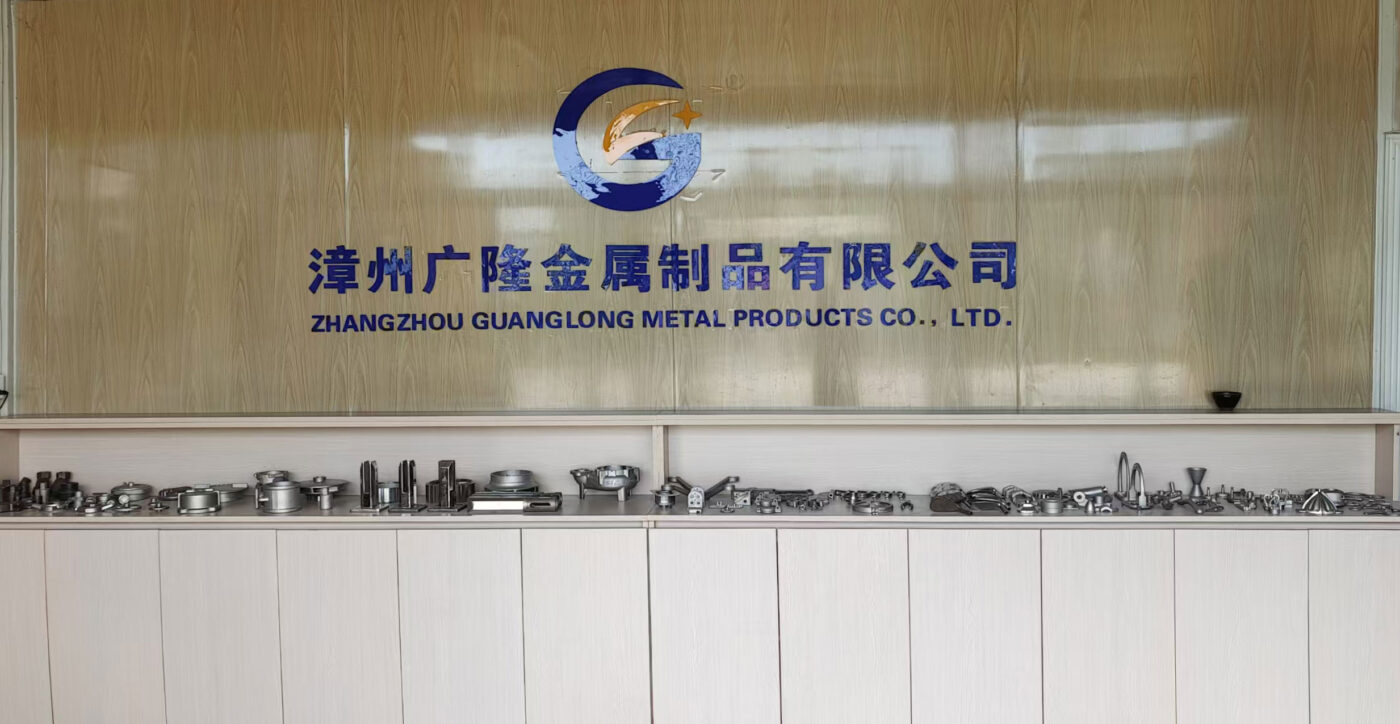Stainless Steel Casting of Wire Rope Tube Thimble Applications
Stainless steel casting is a highly regarded process in various industrial sectors due to its exceptional properties, including durability, corrosion resistance, and aesthetic appeal. One of the prominent applications of stainless steel casting is in the production of wire rope tube thimbles. This article delves into the intricacies of stainless steel casting for wire rope tube thimbles, examining its benefits, the casting process, and the numerous applications of these components.
| Outline |
|---|
| Introduction |
| Understanding Stainless Steel Casting |
| What is Stainless Steel Casting? |
| The History of Stainless Steel Casting |
| Importance of Stainless Steel in Modern Industry |
| Properties of Stainless Steel |
| Corrosion Resistance |
| Strength and Durability |
| Aesthetic Appeal |
| Wire Rope Tube Thimbles |
| Definition and Purpose of Wire Rope Tube Thimbles |
| Types of Wire Rope Tube Thimbles |
| Stainless Steel Casting Process |
| Step-by-Step Casting Process |
| Molding Techniques in Stainless Steel Casting |
| Quality Control in Stainless Steel Casting |
| Applications of Stainless Steel Wire Rope Tube Thimbles |
| Marine Applications |
| Construction and Engineering Uses |
| Industrial Machinery |
| Advantages of Stainless Steel Wire Rope Tube Thimbles |
| Enhanced Durability |
| Superior Corrosion Resistance |
| High Load-Bearing Capacity |
| Comparing Stainless Steel with Other Materials |
| Stainless Steel vs. Carbon Steel |
| Stainless Steel vs. Aluminum |
| Stainless Steel vs. Plastic |
| Maintenance and Care |
| Best Practices for Maintenance |
| Common Issues and Solutions |
| Innovations in Stainless Steel Casting |
| Recent Technological Advances |
| Future Trends in Stainless Steel Casting |
| Environmental Impact of Stainless Steel Casting |
| Sustainability in Stainless Steel Production |
| Recycling and Reusability |
| FAQs |
| Conclusion |
Introduction
Stainless steel casting has revolutionized numerous industries with its ability to produce complex shapes and highly durable components. Among the many applications of this versatile process, the casting of wire rope tube thimbles stands out due to the specific demands for strength and corrosion resistance in challenging environments. This article explores the detailed aspects of stainless steel casting, focusing on the wire rope tube thimble applications.
Understanding Stainless Steel Casting
What is Stainless Steel Casting?
Stainless steel casting is a process that involves pouring molten stainless steel into a mold to create a solid object. This method is prized for its precision, allowing the production of intricate designs and durable parts. The result is a component that not only meets stringent quality standards but also boasts excellent mechanical properties.
The History of Stainless Steel Casting
The origins of stainless steel casting can be traced back to the early 20th century when Harry Brearley, a British metallurgist, discovered stainless steel. Since then, the casting process has evolved significantly, incorporating advanced technologies and methodologies to improve efficiency and product quality.
Importance of Stainless Steel in Modern Industry
Stainless steel is a cornerstone of modern industry due to its unique combination of properties. It is extensively used in various sectors, including construction, automotive, aerospace, and marine, for components that require both aesthetic appeal and functional integrity.
Properties of Stainless Steel
Corrosion Resistance
One of the most significant advantages of stainless steel is its corrosion resistance. This property is particularly crucial for applications exposed to harsh environments, such as marine and industrial settings. The presence of chromium in stainless steel forms a passive layer of chromium oxide, which prevents rust and corrosion.
Strength and Durability
Stainless steel offers outstanding strength and durability, making it ideal for heavy-duty applications. It can withstand high stresses and impacts without deforming, ensuring the longevity of components like wire rope tube thimbles.
Aesthetic Appeal
Beyond its functional attributes, stainless steel is also valued for its aesthetic qualities. Its smooth, lustrous surface makes it a preferred choice for visible components in architecture and design.
Wire Rope Tube Thimbles
Definition and Purpose of Wire Rope Tube Thimbles
Wire rope tube thimbles are fittings used to protect the eyes or loops of wire ropes from abrasion and deformation. They play a crucial role in maintaining the structural integrity of the wire rope, especially in applications involving heavy loads and harsh conditions.
Types of Wire Rope Tube Thimbles
There are several types of wire rope tube thimbles, each designed for specific applications. These include standard tube thimbles, heavy-duty tube thimbles, and custom-designed thimbles tailored to unique requirements.
Stainless Steel Casting Process
Step-by-Step Casting Process
The stainless steel casting process involves several steps, starting with the creation of a wax pattern that is coated with a ceramic shell. Once the shell hardens, the wax is melted out, leaving a cavity into which molten stainless steel is poured. After the metal cools and solidifies, the ceramic shell is broken away to reveal the final product.
Molding Techniques in Stainless Steel Casting
Different molding techniques are employed in stainless steel casting, including sand casting, investment casting, and die casting. Each technique offers distinct advantages and is chosen based on the complexity, size, and precision required for the final component.
Quality Control in Stainless Steel Casting
Quality control is paramount in stainless steel casting to ensure the components meet the required specifications. This involves rigorous testing and inspection at various stages of the casting process, including visual inspections, dimensional checks, and non-destructive testing methods.
Applications of Stainless Steel Wire Rope Tube Thimbles
Marine Applications
In marine environments, stainless steel wire rope tube thimbles are indispensable due to their resistance to saltwater corrosion. They are used in rigging, mooring lines, and other applications where reliability and durability are paramount.
Construction and Engineering Uses
In construction and engineering, wire rope tube thimbles are employed in cranes, elevators, and other heavy lifting equipment. Their robust construction ensures they can handle substantial loads without compromising safety.
Industrial Machinery
Stainless steel wire rope tube thimbles are also utilized in various industrial machinery, including hoists, winches, and conveyors. Their strength and resilience make them ideal for high-stress environments.
Advantages of Stainless Steel Wire Rope Tube Thimbles
Enhanced Durability
The inherent durability of stainless steel ensures that wire rope tube thimbles can withstand prolonged use in demanding conditions. This makes them a cost-effective choice, reducing the need for frequent replacements.
Superior Corrosion Resistance
The superior corrosion resistance of stainless steel is particularly beneficial in environments where exposure to moisture, chemicals, and other corrosive elements is common. This property extends the lifespan of wire rope tube thimbles and enhances their performance.
High Load-Bearing Capacity
Stainless steel wire rope tube thimbles are designed to bear significant loads, making them suitable for applications involving heavy lifting and high tension. Their high load-bearing capacity ensures safety and reliability in critical operations.
Comparing Stainless Steel with Other Materials
Stainless Steel vs. Carbon Steel
While carbon steel is often used for its strength and cost-effectiveness, stainless steel offers superior corrosion resistance and longevity. This makes stainless steel the preferred choice for applications where exposure to harsh environments is a concern.
Stainless Steel vs. Aluminum
Aluminum is lightweight and corrosion-resistant but lacks the strength and durability of stainless steel. For applications requiring robust components capable of withstanding high stresses, stainless steel is the better option.
Stainless Steel vs. Plastic
Plastic components are lightweight and inexpensive but cannot match the strength and durability of stainless steel. In applications where structural integrity is crucial, stainless steel wire rope tube thimbles are the superior choice.
Maintenance and Care
Best Practices for Maintenance
Maintaining stainless steel wire rope tube thimbles involves regular inspections and cleaning to prevent the buildup of dirt and debris. Lubrication of the wire ropes can also help reduce wear and tear on the thimbles.
Common Issues and Solutions
Common issues with wire rope tube thimbles include wear from friction and exposure to corrosive elements. These can be mitigated by choosing high-quality stainless steel thimbles and implementing proper maintenance practices.
Innovations in Stainless Steel Casting
Recent Technological Advances
Recent advances in stainless steel casting include the development of new alloys with enhanced properties and the adoption of 3D printing technologies for creating complex molds. These innovations have improved the efficiency and precision of the casting process.
Future Trends in Stainless Steel Casting
The future of stainless steel casting looks promising, with trends pointing towards greater automation, increased use of artificial intelligence for quality control, and more sustainable production methods.
Environmental Impact of Stainless Steel Casting
Sustainability in Stainless Steel Production
Sustainability is a growing concern in stainless steel production. Efforts are being made to reduce the environmental footprint of the casting process through energy-efficient practices and the use of recycled materials.
Recycling and Reusability
Stainless steel is highly recyclable, which makes it an environmentally friendly choice. Recycling stainless steel reduces the need for raw materials and minimizes waste, contributing to a more sustainable industry.
FAQs
What is the main advantage of stainless steel wire rope tube thimbles?
The main advantage is their superior corrosion resistance, which makes them ideal for use in harsh environments.
How often should stainless steel wire rope tube thimbles be inspected?
Regular inspections should be carried out at least once a month, with more frequent checks in high-stress applications.
Can stainless steel wire rope tube thimbles be used in all types of wire ropes?
Yes, they can be used with various types of wire ropes, provided they match the size and specifications of the rope.
What are the common signs of wear in wire rope tube thimbles?
Common signs of wear include visible grooves, deformation, and surface corrosion. Regular maintenance can help detect these issues early.
Are there different grades of stainless steel used in wire rope tube thimbles?
Yes, different grades such as 304 and 316 stainless steel are used, with 316 offering better corrosion resistance for marine applications.
What innovations are being made in stainless steel casting?
Innovations include the use of new alloys, 3D printing for mold creation, and enhanced quality control through AI technologies.
Conclusion
Stainless steel casting plays a crucial role in the production of wire rope tube thimbles, offering unmatched durability and corrosion resistance. These components are essential in various industries, ensuring the safety and reliability of wire rope systems. With ongoing advancements in casting technologies and a focus on sustainability, the future of stainless steel wire rope tube thimbles looks promising. By understanding the benefits and proper maintenance of these components, industries can continue to rely on them for their critical applications.
Inbound and Outbound Link Suggestions
Inbound Links:
- Stainless Steel Properties and Uses
- Benefits of Using Stainless Steel in Marine Applications
- Innovations in Metal Casting Technologies
Outbound Links:
- Stainless Steel Casting Process Overview
- Wire Rope Thimble Types and Uses
- Sustainability in Metal Production

